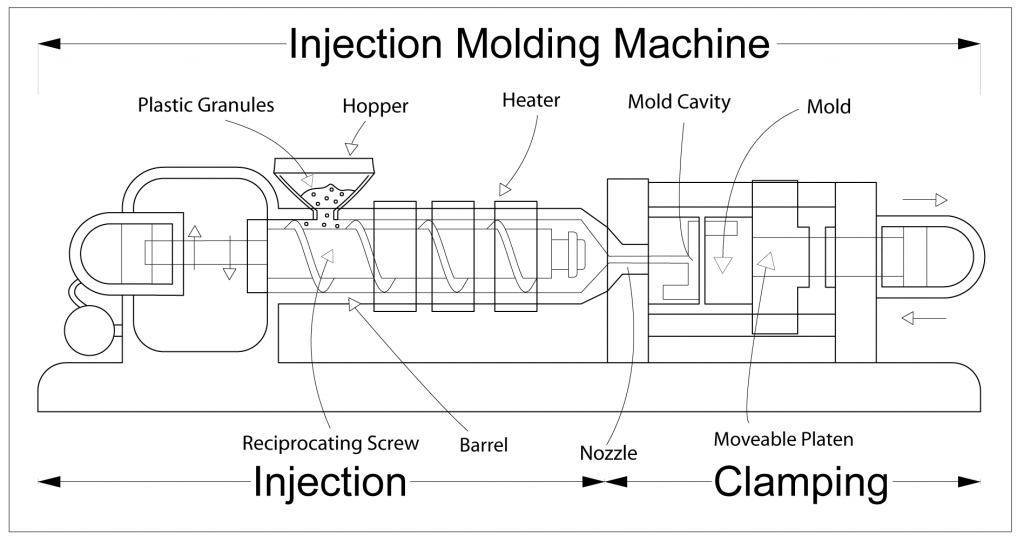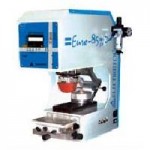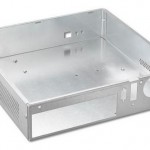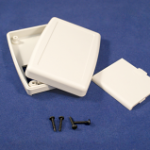Plastic injection molding is the most commonly used process for converting raw material plastics to actual plastic parts today. It is a quick and very reliable method that has many advantages over other similar practices. The most common material used for this type of plastic molding is thermoplastic which can be easily melted, shaped and cooled. Plastic injection molding allows for a quick fully automated production of simple or complex high quality components which can be anything from bottle caps to food packaging and even various automotive products.
Source: Wikipedia
The plastic injection molding cycle
Nowadays, plastic injection molding is mostly automated and even though technology has evolved a lot during the years, the process itself has remained relatively simple. This type of plastic molding requires polymeric material in granule or powder form to be inserted in the machine where it is melted and injected into a mold. The mold itself is usually made of steel, hardened-steel, aluminum or another metal and is held shut under pressure while the molten plastic is being injected. The plastic solidifies very quickly once it enters the mold and is then ejected after a certain period of cooling time which in most cases is very short.
The machines
Different factories use different machines for their plastic molding operations. The type of the machine heavily depends on the type of the parts that are going to be produced. One of the most important qualities for a machine is tonnage. The tonnage of machines usually varies between 5 or less tons to 6,000 tons. However, machines with such a large tonnage are not frequently used.
Quality of the mold
This type of plastic molding is preferred by individuals and businesses around the world because of the high level of precision and quality of final parts that it offers. However, incorrect control of the molding process and bad mold design are usually the two main reasons why thermoplastic moldings are sometimes defective. The most common defects include:
1. Shrinkage
This happens when the thermoplastic cools in the mold. This usually happens with the use of highly crystalline plastics. Plastic usually shrinks more with the increase of the mold temperature because of its increased molecular energy. This may be compensated by higher packing pressure.
2. Splash marks
These defects usually look like silver streaks on the surface of the mold. It usually happens when there is moisture in the material. In this case moisture is heated and enters the mold cavity. Moisture then volatilizes off and causes the so-called splash effect because of the sudden decompression when the material actually enters the cavity. This defect usually occurs when using thermoplastics which attract moisture better than other materials. Such thermoplastics include polyacetal and nylon.
Plastic molding has been taken to a whole new level with the invention of injection molding. The process allows for hundreds of thousands of parts to be produced with a single mold which also makes it extremely cost effective. Other benefits of plastic injection molding include the wide range of available materials and high level of precision.








Comments
One Coment
RSS